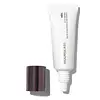What's inside
What's inside
 Key Ingredients
Key Ingredients

 Benefits
Benefits

 Concerns
Concerns

 Ingredients Side-by-side
Ingredients Side-by-side

Isododecane
EmollientTalc
AbrasiveCyclopentasiloxane
EmollientTrimethylsiloxysilicate
EmollientDisteardimonium Hectorite
StabilisingPolyethylene
AbrasiveVp/Eicosene Copolymer
Boron Nitride
AbsorbentAluminum Starch Octenylsuccinate
AbsorbentPropylene Carbonate
SolventSorbitan Sesquioleate
EmulsifyingSynthetic Beeswax
Emulsion StabilisingPentaerythrityl Tetraisostearate
EmollientMethicone
EmollientPhenoxyethanol
PreservativeAcrylates Copolymer
Magnesium Carbonate
AbsorbentDimethicone Crosspolymer
Emulsion StabilisingBisabolol
MaskingSorbic Acid
PreservativeOctyldodecyl Stearoyl Stearate
EmollientCaprylic/Capric Triglyceride
MaskingDimethicone/Vinyl Dimethicone Crosspolymer
Skin ConditioningCrithmum Maritimum Extract
Skin ConditioningDimethiconol
EmollientNelumbo Nucifera Stamen Extract
Skin ProtectingCI 77163
Cosmetic ColorantIron Oxides
CI 77492
Cosmetic ColorantCI 77499
Cosmetic ColorantTitanium Dioxide
Cosmetic ColorantIsododecane, Talc, Cyclopentasiloxane, Trimethylsiloxysilicate, Disteardimonium Hectorite, Polyethylene, Vp/Eicosene Copolymer, Boron Nitride, Aluminum Starch Octenylsuccinate, Propylene Carbonate, Sorbitan Sesquioleate, Synthetic Beeswax, Pentaerythrityl Tetraisostearate, Methicone, Phenoxyethanol, Acrylates Copolymer, Magnesium Carbonate, Dimethicone Crosspolymer, Bisabolol, Sorbic Acid, Octyldodecyl Stearoyl Stearate, Caprylic/Capric Triglyceride, Dimethicone/Vinyl Dimethicone Crosspolymer, Crithmum Maritimum Extract, Dimethiconol, Nelumbo Nucifera Stamen Extract, CI 77163, Iron Oxides, CI 77492, CI 77499, Titanium Dioxide
Isododecane
EmollientTalc
AbrasiveMica
Cosmetic ColorantC13-14 Alkane
SolventTrimethylsiloxysilicate
EmollientDisteardimonium Hectorite
StabilisingHelianthus Annuus Seed Wax
Skin ConditioningTrihydroxystearin
Skin ConditioningHydroxystearic/Linolenic/Oleic Polyglycerides
EmollientTriethylhexanoin
MaskingSorbitan Sesquioleate
EmulsifyingCI 77220
Cosmetic ColorantVp/Eicosene Copolymer
Dimethicone
EmollientPropylene Carbonate
SolventSynthetic Beeswax
Emulsion StabilisingPEG-40 Stearate
EmulsifyingPhenoxyethanol
PreservativeTetrahexyldecyl Ascorbate
AntioxidantTocopheryl Acetate
AntioxidantCI 77891
Cosmetic ColorantCI 77163
Cosmetic ColorantIron Oxides
Isododecane, Talc, Mica, C13-14 Alkane, Trimethylsiloxysilicate, Disteardimonium Hectorite, Helianthus Annuus Seed Wax, Trihydroxystearin, Hydroxystearic/Linolenic/Oleic Polyglycerides, Triethylhexanoin, Sorbitan Sesquioleate, CI 77220, Vp/Eicosene Copolymer, Dimethicone, Propylene Carbonate, Synthetic Beeswax, PEG-40 Stearate, Phenoxyethanol, Tetrahexyldecyl Ascorbate, Tocopheryl Acetate, CI 77891, CI 77163, Iron Oxides
Ingredients Explained
These ingredients are found in both products.
Ingredients higher up in an ingredient list are typically present in a larger amount.
This synthetic powder is used to add a pearly/white color in cosmetics.
Disteardimonium Hectorite comes from the clay mineral named hectorite. It is used to add thickness to a product.
It can also help stabilize a product by helping to disperse other ingredients.
Hectorite is a rare, white clay mineral.
Learn more about Disteardimonium HectoriteIsododecane is a fragrance, emollient, and solvent.
As an emollient, it helps your skin stay soft and hydrated. Emollients help trap moisture into your skin.
Isododecane's role as a solvent makes it a great texture enhancer. It spreads smoothly on skin and does not leave a sticky feeling behind. Isododecane also helps prevent color transfer in makeup products.
Isododecane is not absorbed into skin.
Learn more about IsododecanePhenoxyethanol is a preservative that has germicide, antimicrobial, and aromatic properties. Studies show that phenoxyethanol can prevent microbial growth. By itself, it has a scent that is similar to that of a rose.
It's often used in formulations along with Caprylyl Glycol to preserve the shelf life of products.
This ingredient is a solvent. It helps dissolve active ingredients and alter the texture of products.
Propylene Carbonate is commonly used in makeup and with clay, such as montmorillonite or bentonite.
Studies show this ingredient to be safe for cosmetics. When it is undiluted, it can cause skin irritation. (It is always diluted in skincare and makeup). This ingredient is water-soluble.
Propylene Carbonate is created from propylene glycol and carbonic acid.
Learn more about Propylene CarbonateSorbitan Sesquioleate is derived from sorbitol and oleic acid. It is an emulsifier and prevents ingredients from separating.
Specifically, this ingredient is a water-in-oil emulsifier, meaning it helps water dissolve into oil.
Some studies suggest this ingredient may cause irritation in some people. If you are unsure, it is best to patch test.
This ingredient may not be Malassezia folliculitis, or fungal-acne safe.
Learn more about Sorbitan SesquioleateSynthetic beeswax is created to be identical in structure to beeswax. It possesses the same occlusive and emulsion properties.
A blend of fatty acid esters, fatty acids, and alcohols are used to create synthetic beeswax. Whether or not this ingredient is vegan depends on the source. Sometimes, lanolin is used for its creation.
This ingredient may not be Malassezia folliculitis, or fungal-acne safe.
Learn more about Synthetic BeeswaxTalc is a clay mineral. It helps absorb moisture and improve the texture of products. Like other types of clay, Talc can have a slight exfoliating effect on skin. Talc can be added to increase the volume of products.
Some Baby powders are made by combining talc with corn starch. The word "talc" comes from Latin and originates from Arabic. Talc is a mineral commonly found throughout the world.
If you have any concerns about using talc, we recommend checking out the FDA's official page.
Learn more about TalcThis silicone is an emollient. Emollients create a thin film on the skin to prevent moisture from escaping.
It is not soluble in water and helps increase water-resistance in products.
According to a manufacturer, it can blend seamlessly with silicone oils, such as Cyclopentasiloxane.
Learn more about TrimethylsiloxysilicateWe don't have a description for Vp/Eicosene Copolymer yet.
This ingredient is a combination of red, black, and yellow iron oxide pigments. This combination of colors is usually found in foundation, because it results in a "skin" color.